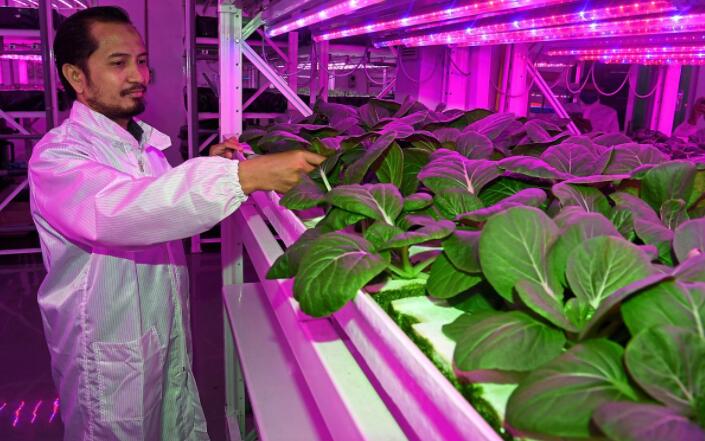On the morning of October 22, 2014, the Institute of Botany, Chinese Academy of Sciences, and Fujian San’an Group Co., Ltd. signed a cooperation agreement at the Institute of Botany to jointly build a plant factory. Fang Jingyun, director of the Institute of Botany, Chinese Academy of Sciences, said that the cooperation with San’an Group is one of the important measures of the Institute of Botany to implement the “first action” plan.

The following year, the two parties jointly established Zhongke San’an. The company is headquartered in Anxi County, Fujian Province, with a plant factory research institute and a plant factory industrialization base. This is also the layout of Sanan Group in the photobiological industry after optoelectronics and optical communications. The project design investment is 7 billion yuan, including the planned construction of a plant factory research institute covering an area of 200 acres and a plant factory industrialization base covering an area of 300 acres. Bases are located in Quanzhou, Fujian, Lu’an, Anhui, and Las Vegas, USA.
Zhongke San’an is committed to applying LED spectroscopy technology to the field of life sciences, and jointly established the Institute of Photobiology Industry with the Institute of Botany of the Chinese Academy of Sciences, focusing on the research of photobiology applications, indoor agricultural artificial intelligence technology, plant growth lighting, and environmental control, and proposed four types of plant factory solutions:
First, the UPLIFT plant factory is an unmanned vertical agricultural production system. Based on its own digital production system, the UPLIFT production workshop has realized unmanned important processes such as seeding, planting, cleaning, and transfer. Artificial intelligence has brought vitality to indoor vertical agriculture, and the planting area has expanded to ultra-high or underground spaces.
Second, the RADIX plant factory is a modular vertical agricultural production system. Based on the RADIX hydroponic module, it is equipped with mature large-scale construction plans, plant lighting technology, nutrient solution control technology, intelligent environmental control technology, etc., to achieve stable and sustainable production of 300+ crops for growers. Innovated the traditional track-type plant factory model, making its construction more flexible, safer and more convenient.
Third, GAIA plant factory is a modular multi-layer seedling growth system. Based on the indoor multi-layer three-dimensional cultivation and nursery module, it integrates plant lighting, nutrient solution control, tidal irrigation, nursery cultivation management, intelligent environmental control and other technologies to create a new model for upgrading the seedling industry. The seedling plant factory not only ensures faster, high-quality, and safe seedlings, the price of seedlings has been equal to that of greenhouse seedlings, subverting the traditional concept of expensive seedlings raised by traditional plant factories. The modular seedling growing system independently developed by Zhongke Sanan is used as the planting unit, which can be flexibly customized and set up a plant factory according to the size of the space and planting needs.
Fourth, in-depth experience-based smart agriculture-Plant DreamWorks. Plant DreamWorks is a one-person experience, a “smart agriculture pavilion” that integrates technology, agriculture, education, and entertainment. It is not restricted by region and space, and its rich features can be combined with various industries to produce wonderful experience scenes.
The Zhongke Sanan design team redefines the growth system: formulating parameter series standards, compiling series pattern spectrum, simplifying product specifications, and improving specialization by modularization. Each product component is an independent module, which can be flexibly combined and installed into a vertical multi-layer growth system. The combination of height and quantity between layers is customized to adapt to different planting varieties and growth needs, and to adapt to the expansion of different spaces of plant factories.
In addition, Shaanxi Xutian takes photovoltaic agriculture as its leading industry, I-farmer plant factory as its flagship product, and takes safety, freshness, health and nutrition as its core concepts to promote and lead the development of photovoltaic agriculture and lead the trend of industrial development. Strive to build a photovoltaic agricultural industry chain centered on the integration of plant growth lighting, plant growth environment intelligent control, plant soilless cultivation and three-dimensional planting, organic nutrient solution, organic substrate, sightseeing and tourism, research and development, production, and sales.










